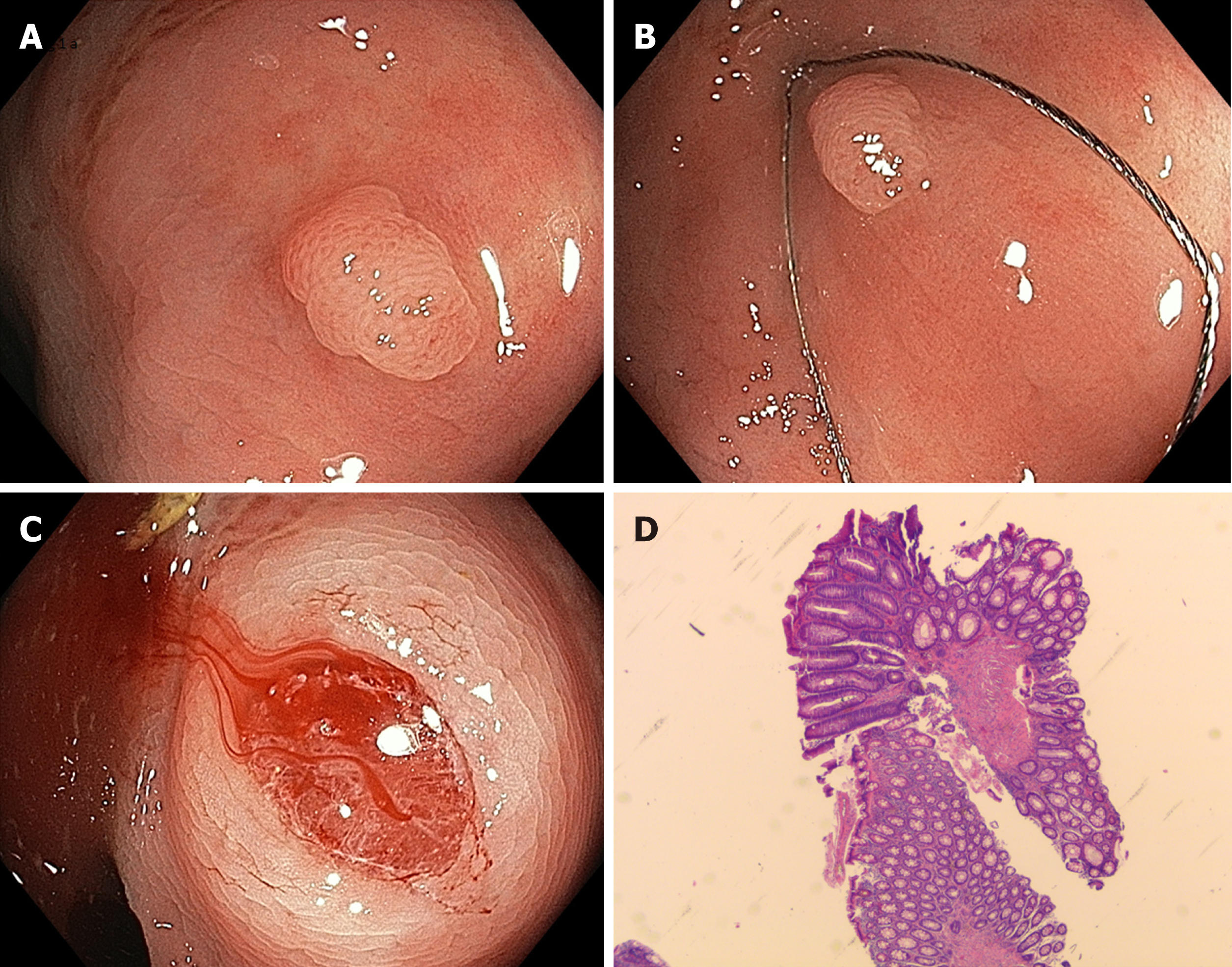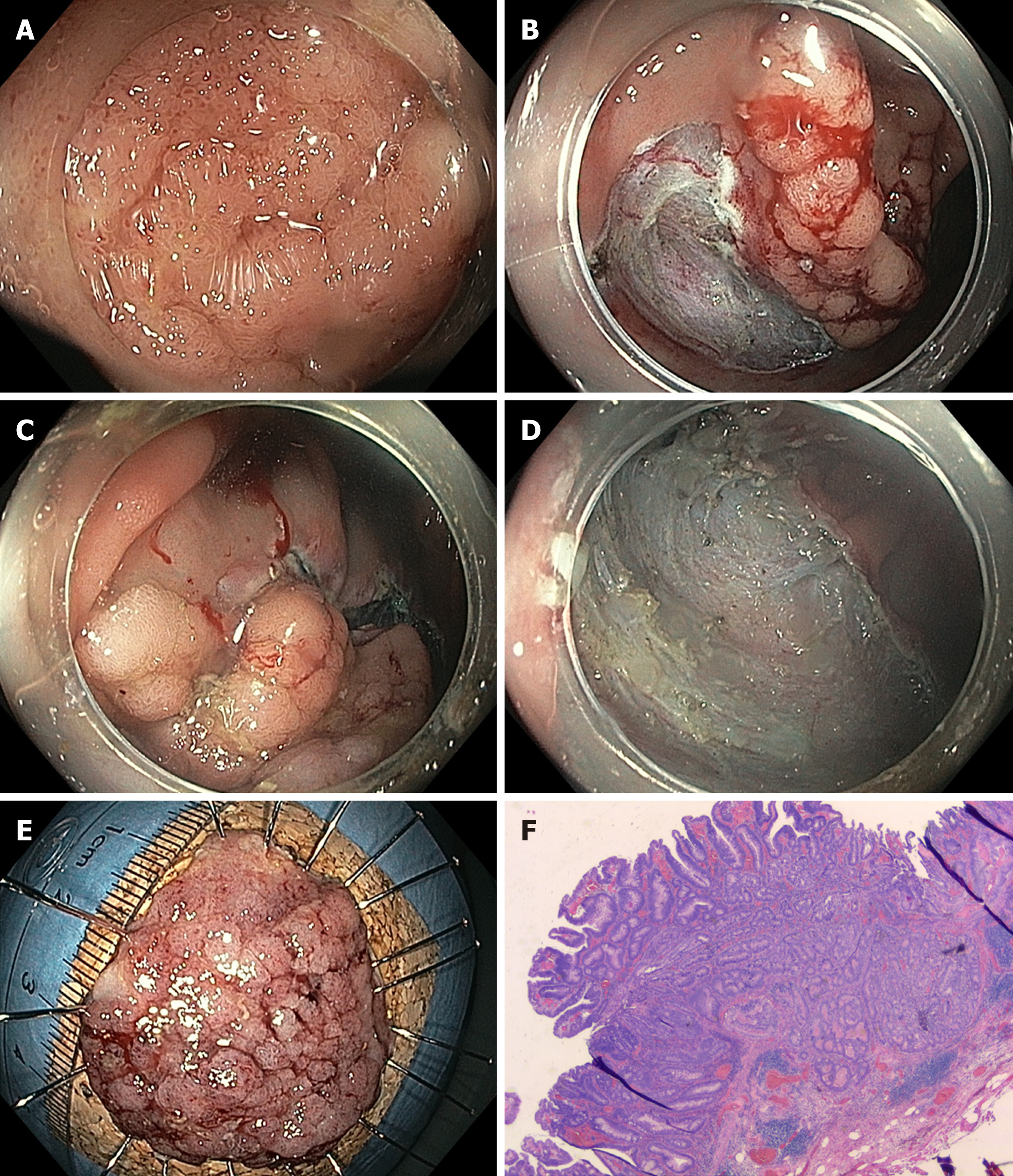Copyright
©The Author(s) 2019.
World J Gastroenterol. Jan 21, 2019; 25(3): 300-307
Published online Jan 21, 2019. doi: 10.3748/wjg.v25.i3.300
Published online Jan 21, 2019. doi: 10.3748/wjg.v25.i3.300
Figure 1 Cold snare resection.
A: Endoscopic appearance of a small polyp in the sigmoid colon. B: Positioning of a specifically dedicated snare for cold snare resection. C: Appearance of the resection field with mild bleeding. D: Histopathology showing tubular adenoma (hematoxylin/eosine, magnification: 80-fold).
Figure 2 Endoscopic submucosal dissection.
A: Endoscopic aspect of a large sessile lesion (Paris 0-Is/0-IIa; lateral spreading tumor, granular type) in the cecum. B: Start of endoscopic submucosal dissection at the proximal site. C: Mucosal incision at the distal margin. D: Completed resection with resection bed in the cecum. E: Resected specimen on corkboard. F: Histopathology: tubulovillous adenoma with focal high-grade intraepithelial neoplasia (hematoxylin/eosine, magnification: 80-fold).
Figure 3 Endoscopic full-thickness resection with the full thickness resection device.
A: Endoscopic aspect of a recurrence after piecemeal endoscopic mucosal resection in the ascending colon. B: The lesion is marked and retracted into the resection cap using a grasping forceps. C: Resection bed with over the scope clip in situ. Note the periluminal fat within the clip. D: Resected specimen on corkboard. E: Histopathology: full-thickness resection specimen with tubulovillous adenoma/low-grade intraepithelial neoplasia (hematoxylin/eosine, magnification 80-fold).
- Citation: Dumoulin FL, Hildenbrand R. Endoscopic resection techniques for colorectal neoplasia: Current developments. World J Gastroenterol 2019; 25(3): 300-307
- URL: https://www.wjgnet.com/1007-9327/full/v25/i3/300.htm
- DOI: https://dx.doi.org/10.3748/wjg.v25.i3.300















